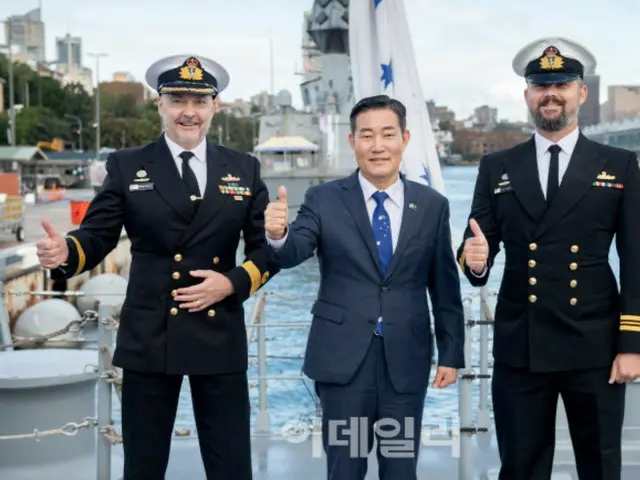Leah is in the process of introducing 11 destroyers, and is also considering Korean-made destroyers as the target models.
Recently, countries in the Middle East have shown great interest in strengthening their military capabilities as sea lanes in the Red Sea and the Persian Gulf are under threat. Military commanders of major Middle Eastern countries have visited South Korea one after another to discuss defense industry companies.
Korean companies including Hanwha Ocean and Hyundai Heavy Industries submitted requests for proposals last year for a contract to purchase three 3,600-ton submarines for the Polish Navy.
The company plans to submit a bid proposal when the request for proposal is announced. If the project proceeds normally, the contract is expected to be awarded in the first half of next year.
The plan is to introduce six to twelve 3,600-ton submarines. If the project goes smoothly, the contract is expected to be awarded around 2027.
Companies from Germany, France, Switzerland and Sweden joined the competition, and Japan's Mitsubishi also joined the bidding for the Canadian project.
The Australian escort ship project will procure three built vessels, while the remaining eight will be delivered to Australia.
The ships will be produced locally in South Korea. The first proposal will be submitted next month, and the contract is expected to be awarded at the end of 2025. In the case of export of the ships, they will be built domestically, just like other weapon systems.
We have moved away from sending them overseas and are evolving to building some parts domestically and the rest locally, or even building everything locally with the help of research and development and technical support.
A prime example is Hyundai Heavy Industries' entry into the Peruvian naval ship market. Last month, Hyundai Heavy Industries signed a 640.6 billion won (approx.
The two companies signed a local joint production contract for four ships worth 72 billion yen. The ships will be built at a local shipyard with Hyundai Heavy Industries providing design data, technical advice, and materials, parts, and equipment.
However, there is a problem that exporting such ships is not easy due to their structure. Basically, warships are ordered by a contractor in the quantity ordered by the country, and the contractor gains experience while building the ships.
The hull of the ship will be built by a shipyard, but it is true that many of the R&D technologies under the supervision of the National Institute of Defense Studies are installed on the ship. Technologies for various weapons, combat systems, electronic equipment, propulsion systems, detection systems, etc.
A significant portion of the technology is state-owned. This means that export approval from the government is always required. This is why the South Korean government, military, and companies must work together to address this issue.
In addition, it is also necessary to consider providing incentives (technical fees) to researchers at the National Institute of Defense Science who developed each technology. If the export is successful, even retired employees should be able to receive technical fees.
It has been decided that the above-mentioned benefits will be paid, and social consensus on this issue is also required.
2024/05/06 07:07 KST
Copyrights(C) Edaily wowkorea.jp 107

